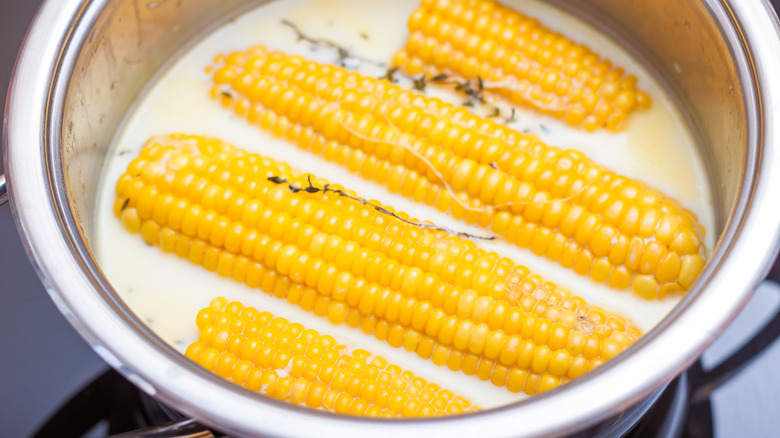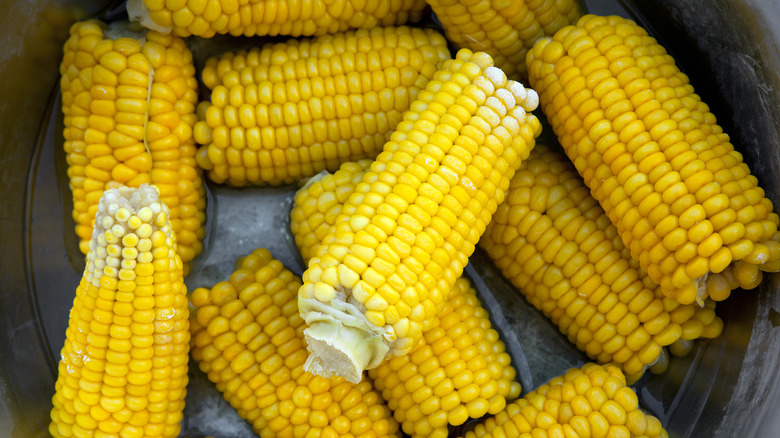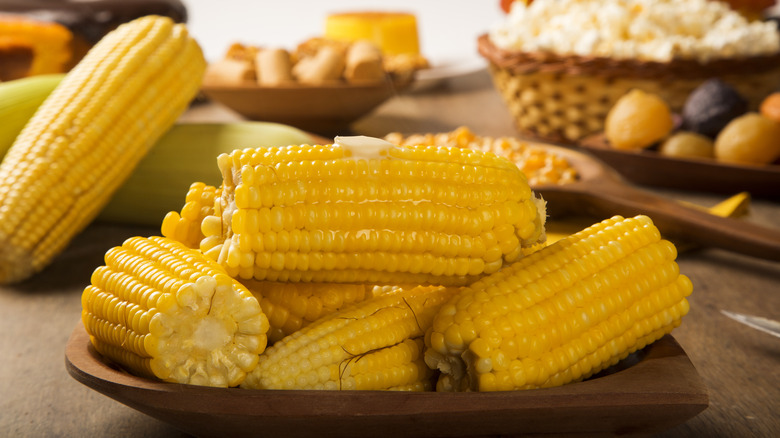The Best Way To Boil Corn On The Cob Involves A Cup Of Milk
If you're a corn enthusiast, you've likely experimented with various methods to produce the sweetest, plumpest kernels on your cobs. Whether you're grilling, roasting, boiling, or using an Instant Pot — and debating whether to leave the husks on or off — there's no shortage of ways to try preparing this beloved summer produce. The key to exceptionally succulent corn, however, may lie in using simple ingredients already in your fridge.
While many people opt to boil their shucked corn in a simple mix of salt and water, a more flavorful result can be achieved by creating a butter bath, incorporating milk and butter into the boiling water. The sugar in the milk seeps into the kernels and enhances their sweetness, while the buttery goodness coats the outside. Whether you've ended up with less-than-fresh ears, or just want to elevate your nearly perfect corn on the cob, this simple trick is your solution.
How to boil corn on the cob in milk
The first step to making sure you wind up with the best, sweetest corn is to select the freshest ears at the store. The fresher the corn is, the more naturally sweet it will be to begin with. Fresh corn will have light-colored silk and a vibrant green husk that fully covers the cob. When you pick up the corn, it should also feel heavy for its size, as weight is a strong indicator of freshness.
When you're ready to prepare the corn, remove the husks and silks. While some boiling methods allow you to keep the husks on, this technique requires direct contact between the kernels and the milk, so shucking is necessary.
Next, fill a pot with enough water to completely submerge the corn, and bring it to a rolling boil over high heat. Stir in at least a cup of milk and a few tablespoons of butter (though you can feel free to measure that butter with your heart). Once the butter has melted, add the corn and cook until the kernels reach your desired tenderness.
Tips and variations
If you want to keep your corn on the cob vegan, consider swapping butter and milk for dairy-free alternatives. Since one cup of milk contains about 12 grams of sugar, choose a substitute with a similar sugar content, such as rice milk (12.9 grams) or soy milk (almost nine grams). If your milk substitute has lower sugar content, you can add a bit of sugar to the milk-butter mixture. You can do the same with regular milk if you desire even sweeter corn.
You also have the option to eliminate the water and boil only milk and butter together. However, it's important to slowly bring the milk to a boil. Boiling milk too quickly can alter its color and flavor, and it may even scorch and separate.
Lastly, don't discard your milky and buttery base once the corn is done cooking. You can repurpose it for another dish, like a corn and fennel soup. Just be sure to adjust the milk-to-butter ratio in your subsequent recipes as needed.



